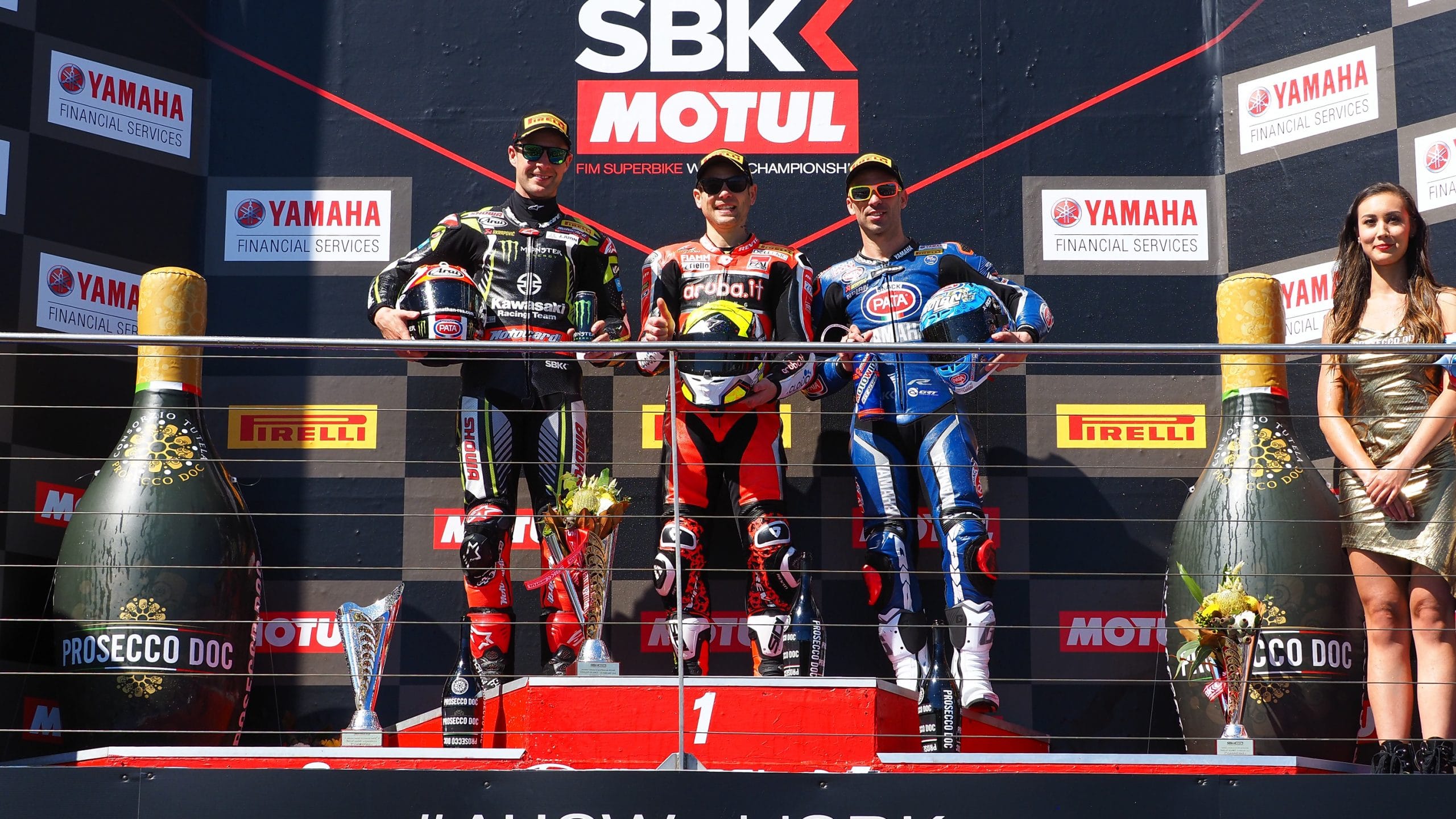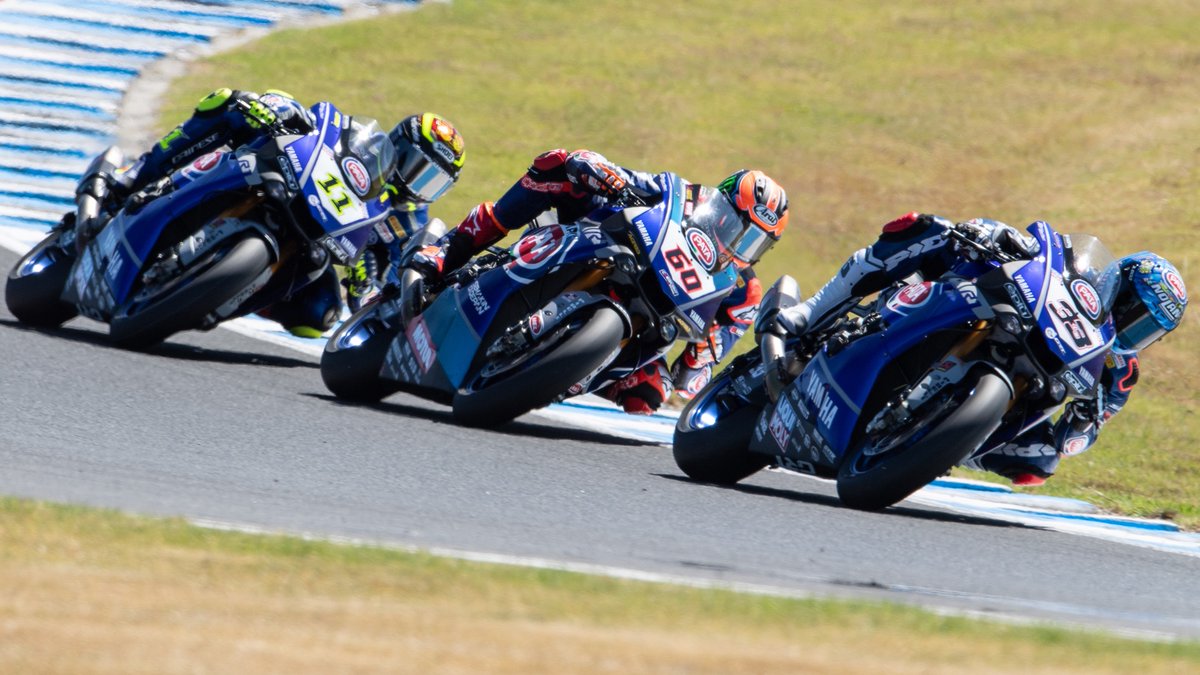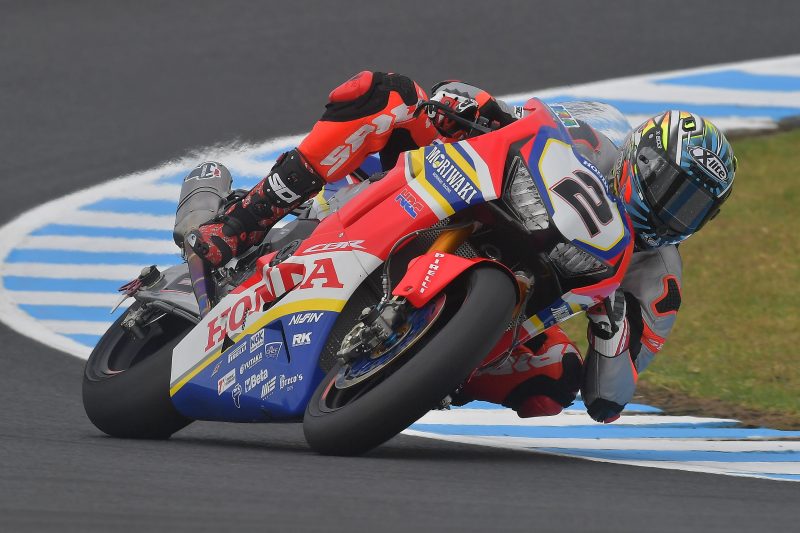
WorldSBK: Australia Debrief
The 2019 FIM World Superbike Championship roared into life this weekend at the Phillip Island Circuit, Australia. The first round of the season brought with it numerous talking points, and some clear indicators as to what we can expect from the new season.
Alvaro Bautista and Aruba.it Racing Ducati did an extraordinary job, securing the double in both feature length Superbike races, and becoming the inaugural winner of the new 10-lap Superpole race. Bautista loves the circuit, and his riding style perfectly suits the track, enabling him to conserve tyre life through smooth gradual throttle applications on the exit of corners, combined him pinpoint metronomic braking. The warning signs to the rest of the field were fired during the 2018 Australian GP when, on a factory Ducati Desmosedici GP18 machine, the Spaniard (standing in for the injured Jorge Lorenzo) ran toe-to-toe with the championship protagonists and finishing in a hard fought P4.
Such was the dominance of both rider and team, the decision by Aruba Racing to spend 2018 testing and developing the Panigale V4R has been clearly vindicated. When Ducati Motor initially launched the V4 model in late 2017, the engine ‘out of the box’ was declared every bit the equal to their v-twin – for the team that was not good enough. A year spent pounding the tarmac around Mugello and Vallelunga, the majority of work done by revered test rider Michele Pirro, and the V4R was ready. Despite your typical early teething problems every bike goes through in early tests, messrs Davies and Bautista have not stopped beaming from the first day they got to play with their new weapon. No doubt they’ll now be smiling all the way to Buriram, where the series reconvenes in three weeks’ time.

In contrast, Kawasaki Racing Team and BMW WorldSBK team have brought their new machines (ZX10-RR and S1000RR respectively) to this season with only the official winter tests under their belt in terms of race development time. In defence of Kawasaki, their new machine is an evolution on their previous contender – rather than a complete revolutionary overhaul a la Ducati. The ZX10-RR simply just doesn’t have the extensive mileage and data completed yet to give both engineers and riders full confidence in their setup direction.
The main problems appeared to be under acceleration out of the slow speed corners, and balance distribution – both Jonathan Rea and Leon Haslam looked to be having to exert much more physical effort than their main rivals through the longer turns. Neither problem should cripple the team and, with a wealth of data from the previous bike and from all the circuits, Kawasaki will be confident of quickly making progress with their new contender.
That being said, Haslam will still be quietly satisfied with his first performance with Kawasaki Racing Team. The British superbike champion cited ‘unfinished business’ as his motive to return to the world series in 2019, and he left nobody with any doubts that he means business this season. Regularly in front of his more illustrious teammate, both on track as well as on the timing sheets, and more than happy to stick out the elbows and fight toe-to-toe. Haslam has not signed to be the team’s number two. Kawasaki will close the gap down to Ducati quickly, of that there can be little doubt. However, even when they do, Jonathan Rea will not have it all his own way without a serious in-house fight. The battle between the two teammates will be fierce and utterly compelling.
BMW WorldSBK team upon reflection had a remarkable opening weekend. Given the ‘last minute’ timings of the team announcement, launch and a scramble to make it to winter testing (they made it to the final two pre-season tests at Portimao and Phillip Island), they should be fully applauded for being as competitive as they were. From the outset on Friday the S1000RR was considerably slower on straight line speed than the other machines. It later transpired that the team were running stock engines – as their fully tuned superbike spec engines are still in development. It is hoped that they will be ready for the next round in Thailand, and certainly in use by the time the championship starts the first European leg at Aragon.
Yamaha looked to have closed the gap to Kawasaki over the winter, and the performances in Australia confirmed exactly that. Over the winter, the Japanese manufacturing giant has set up a dedicated race operation HQ in Spain in an effort to reduce the time between collecting feedback from the team at the track, and developing upgrade parts for the bikes. The addition of a second factory backed team (GRT Yamaha) has only increased the rate of development.

All four Yamaha riders – Alex Lowes and Michael van der Mark (Pata Yamaha), Marco Melandri and Sandro Cortese (GRT Yamaha) were near permanent fixtures inside the top ten across the weekend. Between the four riders they secured a total of 108 points, and Melandri had the honour of being the manufacturer’s first podium finisher of the season. Promising signs indeed as the championship heads to Thailand next month.
Toprak Razgatlioglu (Puccetti Racing Kawasaki) produced a timely reminder that it won’t all be about the factory riders in 2019. The flying Turkish rider was a regular fixture inside the top ten throughout the weekend and more than held his own dicing against the likes of Lowes, Cortese and Chaz Davies (Aruba.it Racing Ducati). There is also a level of expectation on the 22-year old’s shoulders following a very solid rookie season in 2018. He has the relative safety net of being in an independent team.
Given the hierarchies of paddock politics – which are not all that dissimilar from their grand prix counterparts – the team are unlikely to be able to make a genuine world championship challenge. However, it is no secret that Kawasaki have got their eye on the Turk as a future world champion. The Puccetti team are regarded as KRT’s satellite operation and will want to see him start to regularly challenge the front runners. 11 points from this weekend is just a stable base to build on.
Finally we must turn our attention to Moriwaki Honda. The fanfare which heralded the return of a full HRC backed team (for the first time since 2002) masked the sad demise of the Ten-Kate team. It has been almost a total ‘start from scratch’ operation by Honda over the winter, relying heavily on data from their Fireblade SP2 machines competing in the Japanese Superbike Championship. After two painful years trying to understand their troublesome machine, HRC clearly have decided an in-house development job is the best way to go. The appointment of Ryuichi Kyonari to be Leon Camier’s teammate suggests just that.

It was no surprise to anyone that the team were still far off the front running pace. However, I wouldn’t go as far to use the word ‘struggling’. The bike certainly looked more stable through the breaking areas, than it has in the previous two years. Camier, despite crashing out of Race 1 on cold tyres on the opening lap, looked comfortable and was able to produce a solid ride in the second feature race, finishing P10 and battling all the way with the GoEleven Ducati of Eugene Laverty and taking 6 precious championship points. A little victory for a team embarking on its long road back to the top.



![Private: [ID: 71rYi-xncgM] Youtube Automatic](https://motorradio-xijqc.projectbeta.co.uk/wp-content/uploads/2024/08/private-id-71ryi-xncgm-youtube-a-1-360x203.jpg)
![Private: [ID: 1SfHxvC8Doo] Youtube Automatic](https://motorradio-xijqc.projectbeta.co.uk/wp-content/uploads/2024/07/private-id-1sfhxvc8doo-youtube-a-1.jpg)
![Private: [ID: H6XRkf6kROQ] Youtube Automatic](https://motorradio-xijqc.projectbeta.co.uk/wp-content/uploads/2024/07/private-id-h6xrkf6kroq-youtube-a-1-360x203.jpg)
![Private: [ID: Kb6w-qAmKls] Youtube Automatic](https://motorradio-xijqc.projectbeta.co.uk/wp-content/uploads/2023/12/private-id-kb6w-qamkls-youtube-a-360x203.jpg)
![Private: [ID: CcpwYw20k3k] Youtube Automatic](https://motorradio-xijqc.projectbeta.co.uk/wp-content/uploads/2024/07/private-id-ccpwyw20k3k-youtube-a-360x203.jpg)

![[ID: x1SiRC5jhW4] Youtube Automatic](https://motorradio-xijqc.projectbeta.co.uk/wp-content/uploads/2022/04/id-x1sirc5jhw4-youtube-automatic-360x203.jpg)
![[ID: lMZ8lAeLubk] Youtube Automatic](https://motorradio-xijqc.projectbeta.co.uk/wp-content/uploads/2022/04/id-lmz8laelubk-youtube-automatic-360x203.jpg)
![[ID: GAYCcnqyFo4] Youtube Automatic](https://motorradio-xijqc.projectbeta.co.uk/wp-content/uploads/2022/04/id-gayccnqyfo4-youtube-automatic-360x203.jpg)
![[ID: Gg142H296QY] Youtube Automatic](https://motorradio-xijqc.projectbeta.co.uk/wp-content/uploads/2022/04/id-gg142h296qy-youtube-automatic-360x203.jpg)
![Private: [ID: 71rYi-xncgM] Youtube Automatic](https://motorradio-xijqc.projectbeta.co.uk/wp-content/uploads/2024/08/private-id-71ryi-xncgm-youtube-a-1-236x133.jpg)
![Private: [ID: H6XRkf6kROQ] Youtube Automatic](https://motorradio-xijqc.projectbeta.co.uk/wp-content/uploads/2024/07/private-id-h6xrkf6kroq-youtube-a-1-236x133.jpg)
![Private: [ID: Kb6w-qAmKls] Youtube Automatic](https://motorradio-xijqc.projectbeta.co.uk/wp-content/uploads/2023/12/private-id-kb6w-qamkls-youtube-a-236x133.jpg)
![Private: [ID: nc-8g6ROCe8] Youtube Automatic](https://motorradio-xijqc.projectbeta.co.uk/wp-content/uploads/2023/11/private-id-nc-8g6roce8-youtube-a-236x133.jpg)
![Private: [ID: wWrhfjOQuIc] Youtube Automatic](https://motorradio-xijqc.projectbeta.co.uk/wp-content/uploads/2023/11/private-id-wwrhfjoquic-youtube-a-236x133.jpg)